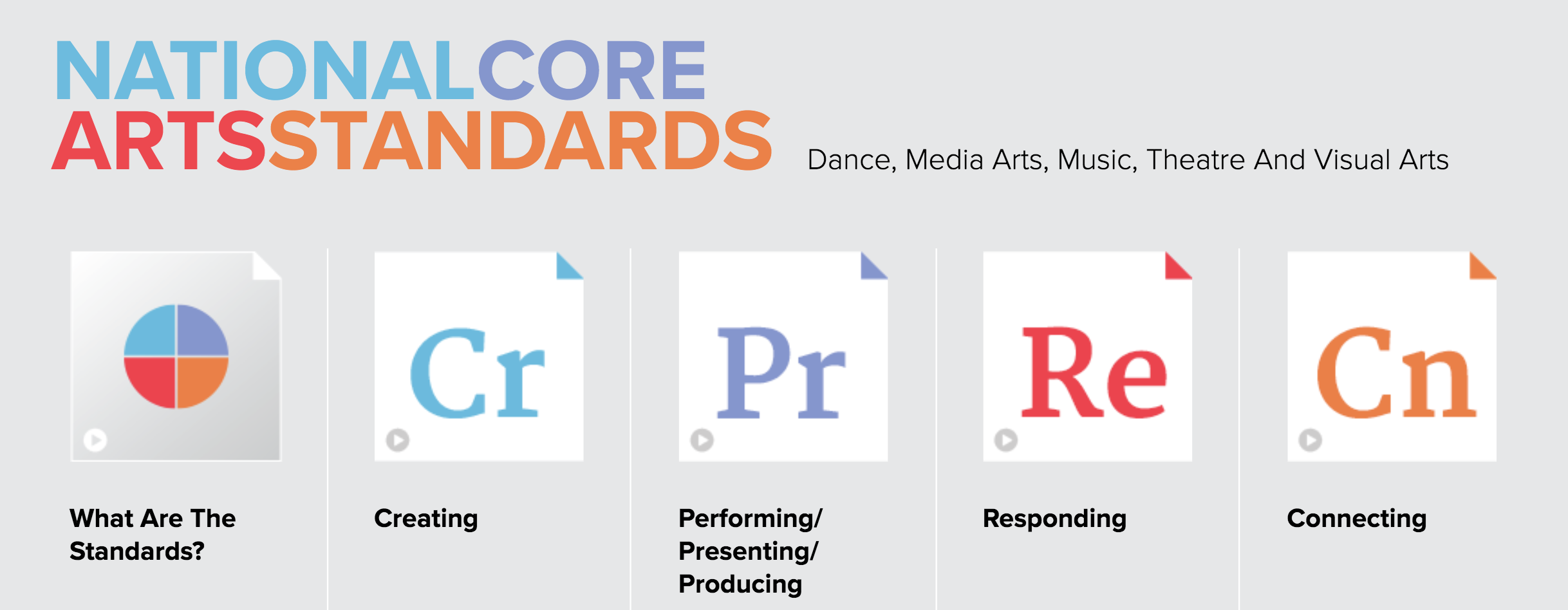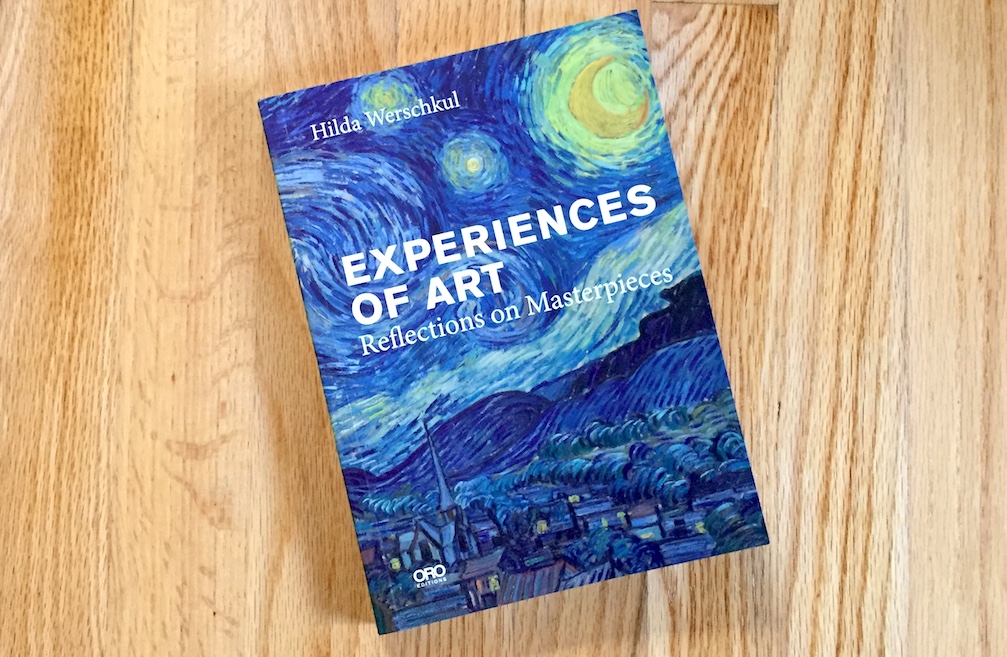We all know how difficult it can be to get secondary students interested in art history. Sometimes, it’s like grasping at straws to find relevant and meaningful connections. Throw in short classes and a plethora of other objectives to meet, and the task seems almost impossible.
Even if you do find time to present information about art history, how do you know if it’s sinking in? Many of us focus on artmaking in our classrooms. However, we need to remember “creating” is only one process the National Core Arts Standards addresses. Presenting, responding, and connecting are equally important and deserve attention in the curriculum.

Bringing art history into your classroom is a great way to hit some of the anchor standards in these other areas.
You just have to glance at the anchor standards to know art history can play an important role:
Under Responding:
- Anchor Standard 7: Perceive and analyze artistic work.
- Anchor Standard 8: Interpret intent and meaning in artistic work.
- Anchor Standard 9: Apply criteria to evaluate artistic work.
Under Connecting:
- Anchor Standard 10: Synthesize and relate knowledge and personal experiences to make art.
- Anchor Standard 11: Relate artistic ideas and works with societal, cultural, and historical context to deepen understanding.
But the question remains. HOW do you get students to respond and connect to art history?
The answer lies in crafting the right questions and environment, something Hilda Werschkul knows all about.
Hilda’s Background
 Hilda Werschkul holds a Ph.D. in art history from Columbia University and currently teaches at the School of Visual Arts in New York City. She also is the creator of The Art Trainer ™, a consulting business that aims to help companies “explore the communicative power of art as a portal to enhance creativity, drive innovation, foster an equitable atmosphere of professional sensitivity, and create a culture of shared values.”
Hilda Werschkul holds a Ph.D. in art history from Columbia University and currently teaches at the School of Visual Arts in New York City. She also is the creator of The Art Trainer ™, a consulting business that aims to help companies “explore the communicative power of art as a portal to enhance creativity, drive innovation, foster an equitable atmosphere of professional sensitivity, and create a culture of shared values.”
But today, I want to focus on Hilda’s experience at Parsons School of Design at the New School University in New York. It was there Hilda created an online course as a pilot project which focused on Art History from 2008 to 2010.
This was when online learning was in its infancy. Hilda describes her experience this way, “This initiative was spurred by the dean of curriculum and instruction, not the art history department. I was the sole volunteer. I did this to expand my pedagogical techniques and simply explore something new even while it was hotly debated at the time by the establishment. I was, indeed, very surprised by what I learned from online teaching.”
In fact, Hilda’s students did such a thoughtful and inspiring job responding to the artwork throughout the course that she wrote a book about her experience called, Experiences of Art: Reflections on Masterpieces.

Recently, I was able to chat with Hilda about the success of her course. I wanted to know how she was able to draw such meaningful reflection from her students. Although her students were in college, her ideas will translate well to secondary art classrooms everywhere.
Here are 5 Ways to Help Your Students Meaningfully Reflect on Art
1. Get to know your students and be genuinely interested in what they have to say.
Building solid relationships is the foundation of everything we do in the classroom. They even impact our students’ ability to engage with art history! Hilda reiterated this idea when she told me, “Getting to know your students helps them open up in class.” She went on to say, “Students have independent minds. This generation is bored by traditional education, and ultimately they want to see what is in it for them.”
Forming meaningful relationships with your students will not only help you hone in on their specific interests. It will also make them more comfortable to share their thoughts with you.
2. Move the discussion out of the physical classroom.
Hilda talked about how much an online platform can help students open up. She described it as, “a safe platform to learn from each other and experiment with their ideas.” Hilda went on to say this about her experience teaching the course: “Students like to be in control of the learning process and not on the passive receiving end of transmitted knowledge. My students all went beyond what they were expected to do, for the most part, by continuing to research what they were learning from the online lectures and by doing searches online. They seemed to like the interactiveness of learning technology.”
Allowing students to discuss outside of the classroom takes some of the pressure off. They have time to think about and formulate their answers. Working online, they can conduct extra research or pursue topics that interest them immediately. This method lends an authenticity to their learning. They can digest the information, respond to it, and explore further on their own.

If your students don’t have access to technology at home, you may be able to find a creative solution in your classroom. Maybe you set up a center where students can use an iPad or computer to respond to a question at their leisure. Or, perhaps you create a rotation, so students visit the center once a week.
You could also scrap technology altogether and make a physical board where students can tack written responses to a question. The idea is to remove the pressure of an in-person discussion, at least at first. As your students practice sharing their ideas, they will be more willing to share in real time. This type of written discussion is an effective scaffolding tool!
Looking for even more ways to help students connect to art history? You won’t want to miss the course Integrating Art History. You’ll leave class with a comprehensive toolkit of lesson plans and organizational strategies.
3. Help students see personal connections to art history.
I asked Hilda if certain types of questions drew more reflection out of the students than others. She said yes, telling me, “Those were the questions that had contemporary day relevance and allowed them to reflect on personal experiences. Making art relevant to the everyday and also something that you have a direct, sometimes emotional connection with is what it takes for a work of art to be memorable. Otherwise, it is easy for a person to forget the facts in the long term.”
For example, one of the chapters in Experiences of Art deals with prehistoric art. This type of art may not interest students outright, but Hilda framed her discussions in terms of “getting students to think about what prehistoric art tells us about the origins of human creativity” which helped them dive right in.
In a similar vein, Hilda also addresses classicism in the book. She told me those discussions “…got students to think about the foundations of Western civilization and re-evaluate where this legacy leaves us today in our problematic world.”
Asking broader questions that require students to make connections helps them dive deeper into the subject matter.
4. Set some concrete parameters.
It’s not enough to show students some work and then ask them to “write about it.” To draw out insightful reflection, it’s best to give some concrete parameters. In Hilda’s case, she required her students to write, at minimum, one solid paragraph. In each discussion board, she asked students to write about a specific work they found personally intriguing or meaningful. Pairing a broader question with a specific piece helped students stay interested and focused.
Of course, we know for as many students who go above and beyond on their own, others are going to struggle. I asked Hilda what she did when a student didn’t give a thorough answer. She told me, “If a student wasn’t imaginative, I told them that the goal wasn’t to provide me with the answer of a ‘quiz question.’ Even while there is standard, accepted knowledge to be gained from art history, a work of art should have an independent life and speak to every individual in a unique way.”
5. Let your enthusiasm shine through.
Above all, if you aren’t excited about the info you’re presenting, your students are going to feel that. Enthusiasm is contagious. Make sure you’re looking for interesting facts and stories to weave throughout your presentation. Humor can go a long way, too. Don’t be afraid to use it!
Getting students to talk about art history doesn’t need to be a chore. Try having students write instead of speak to build their confidence. Give students choice so they can respond to pieces that speak to them. With these and the other ideas above, your students will be making meaningful connections in no time!
Special thanks to Hilda Werkschkul for taking time to talk about her newest book Experiences of Art with us and sharing such valuable insight!
How do you help your students connect to art history?
What other tips do you have to help students open up and share their opinions?
Magazine articles and podcasts are opinions of professional education contributors and do not necessarily represent the position of the Art of Education University (AOEU) or its academic offerings. Contributors use terms in the way they are most often talked about in the scope of their educational experiences.





